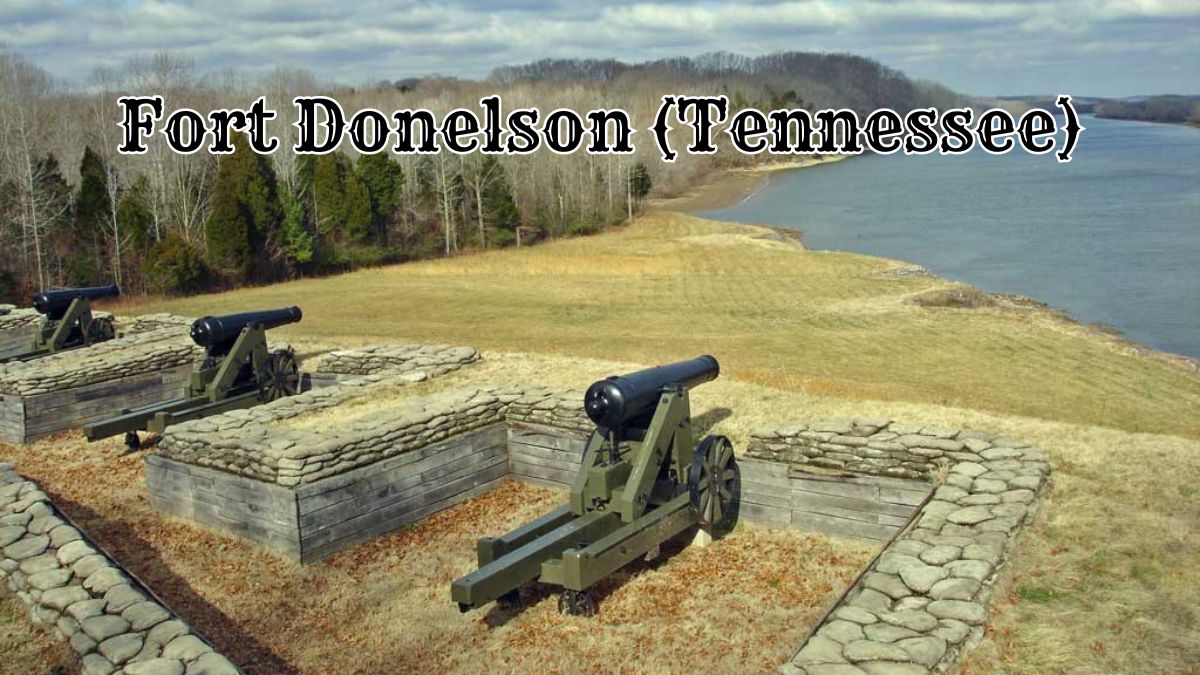Fort Donelson in Tennessee is a pivotal site in Civil War history.
This key battle marked a turning point for the Union forces, providing them strategic control over the Cumberland River and opening pathways deeper into Confederate territory.
The battle showcased significant military maneuvers and the effective use of joint land and naval operations.
Union forces, led by Ulysses S. Grant, executed coordinated assaults and naval engagements that ultimately led to a crucial victory.
The surrender of Confederate troops at Fort Donelson was a major blow to the Confederacy, bolstering Union morale and shifting the momentum of the war in favor of the North.
Battle of Fort Donelson (Tennessee)
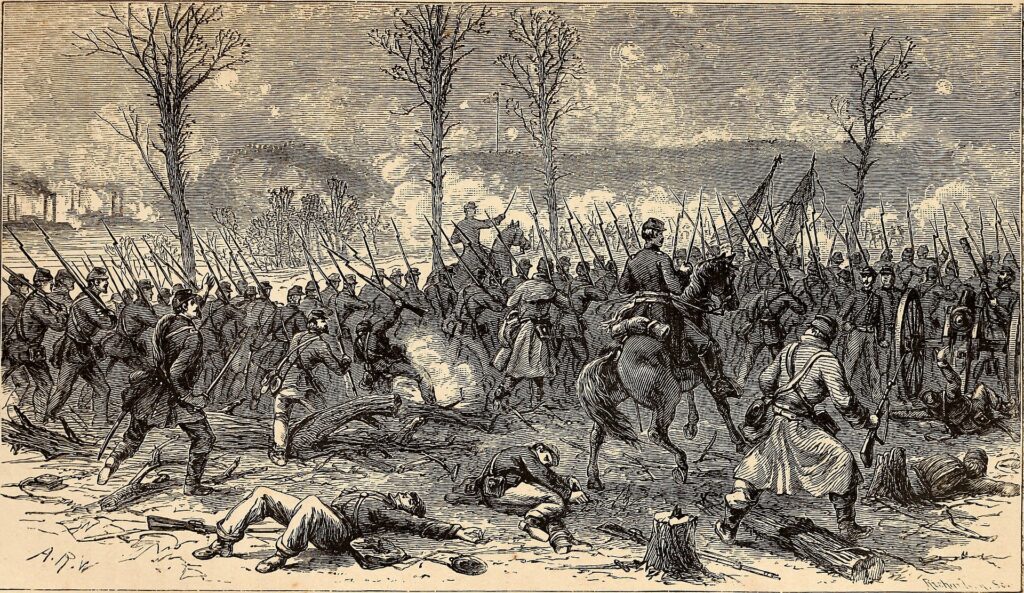
Key elements of the Battle of Fort Donelson include its strategic significance in the Civil War and the specific geographic and preliminary skirmishes that shaped the battle.
Strategic Importance in the Civil War
Fort Donelson held crucial strategic value during the Civil War.
It was located in Tennessee and controlled the Cumberland River, a significant waterway for transporting troops and supplies.
Control over this fort would enable the Union forces to penetrate deeper into the Confederate-held territories.
The capture of Fort Donelson also had implications for the control of the nearby Tennessee River, further securing Union advances toward Nashville.
The fort’s location near the Kentucky border increased its strategic importance, allowing for better maneuverability and logistics for the Union Army in the Western Theater.
Initial Battles and Surrounding Geography
The geography surrounding Fort Donelson played a major role in the battle.
Situated near the Cumberland River, the fort’s location made it a natural defensive stronghold.
The surrounding terrain included rugged hills and dense forests, providing advantages and challenges for the fighting forces.
Initial battles around the region saw skirmishes in neighboring areas, setting the stage for the larger conflict.
These preliminary encounters tested the might of both Union and Confederate forces, with the Union pushing to gain a foothold in Tennessee.
The capture of nearby Fort Henry on the Tennessee River by Union forces was a precursor to the attack on Fort Donelson, emphasizing the strategic coordination of the Union campaign.
Military Engagement
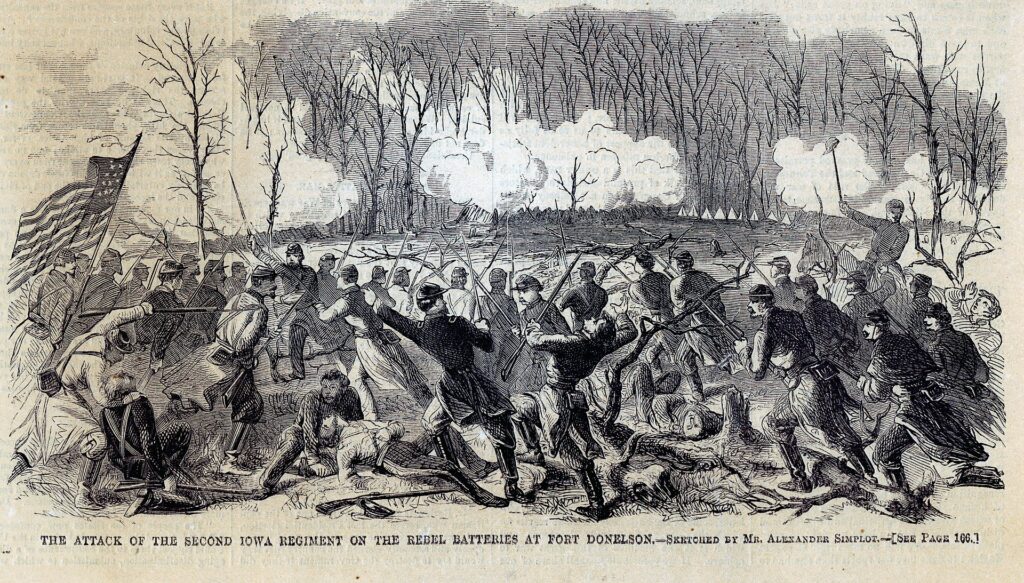
Fort Donelson witnessed significant military maneuvers and battles between the Union and Confederate forces.
These engagements involved ground assaults, naval operations, and strategic defenses.
Siege and Assaults
Union forces, led by Ulysses S. Grant, began the siege on Fort Donelson on February 12, 1862.
They executed a series of coordinated assaults to encircle the fort, leveraging artillery and infantry to press the Confederate defenders.
John B. Floyd commanded the Confederates, supported by Gideon Pillow and Simon B. Buckner.
Despite their efforts, the Union’s numerical superiority and strategic positioning placed relentless pressure on the Confederate lines.
The Confederates attempted a breakout on February 15.
Initially successful, their momentum faltered due to miscommunication and effective Union counterattacks.
By February 16, Buckner, left in charge by Floyd and Pillow, negotiated surrender terms with Grant, marking a significant Union victory.
Union naval operations played a crucial role in the battle, with Flag Officer Andrew H. Foote leading the ironclad gunboat fleet.
These vessels, including the USS Carondelet and USS St. Louis, engaged Confederate river batteries on February 14.
The gunboats aimed to silence the fort’s artillery positions and aid the Union ground forces.
Despite sustaining heavy damage and being forced to withdraw, their efforts weakened the Confederate defenses, contributing to the eventual fall of Fort Donelson.
The Union’s use of joint land and naval operations demonstrated effective coordination between military branches, significantly enhancing their operational capabilities and leading to better control of strategic waterways.
Union Attack and Confederate Defense
Grant’s overall strategy revolved around cutting off Fort Donelson from Confederate reinforcements and supplies.
His troops, hardened by their recent victory at Fort Henry, were well-equipped and determined.
On the Confederate side, Albert Sidney Johnston entrusted the fort’s defense to Floyd, Pillow, and Buckner.
They fortified their positions with extensive earthworks and cavalry patrols to anticipate Union movements.
Despite initial successes in repelling Union attacks, the Confederate defense ultimately crumbled under sustained pressure.
The fall of Fort Donelson opened the Cumberland River to Union forces, giving them a critical strategic advantage in the Western Theater of the Civil War.
Leadership and Commanders
The leadership at Fort Donelson was pivotal in shaping the battle’s outcomes. This section highlights the key figures in both the Confederate and Union forces.
Confederate Command Structure
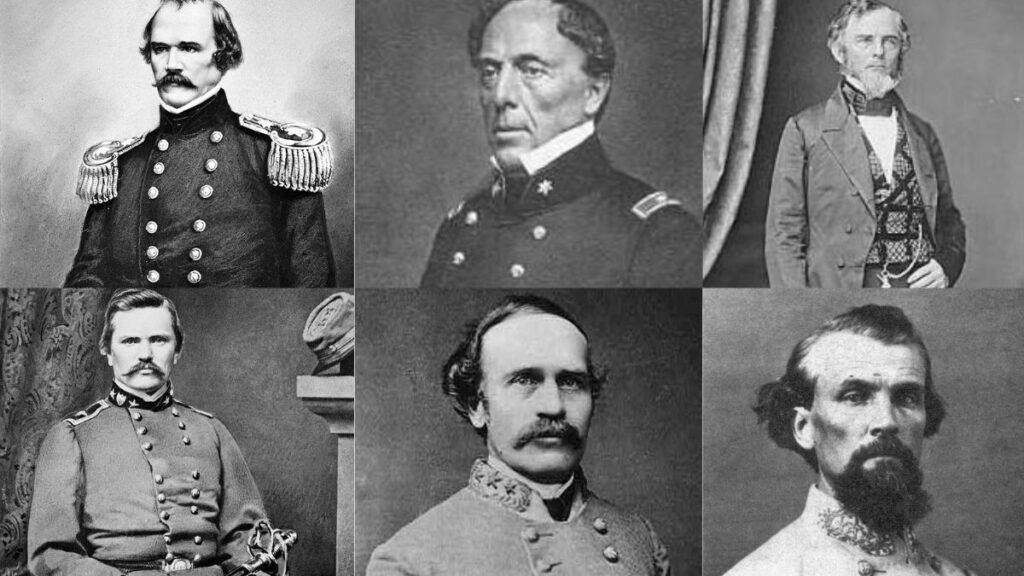
The Confederate defense of Fort Donelson was under the command of several prominent leaders.
Major General John Floyd was eventually placed in overall command despite his indecisive leadership.
Brigadier General Gideon J. Pillow took an active role in battlefield management but often clashed with Floyd over strategies.
Brigadier General Bushrod Johnson was critical in organizing the defenses during the battle.
He worked closely with Brigadier General Daniel S. Donelson, responsible for the fort’s artillery installations.
Colonel Nathan Bedford Forrest led the cavalry, earning a reputation for aggressive tactics and bold maneuvers.
Union Leadership
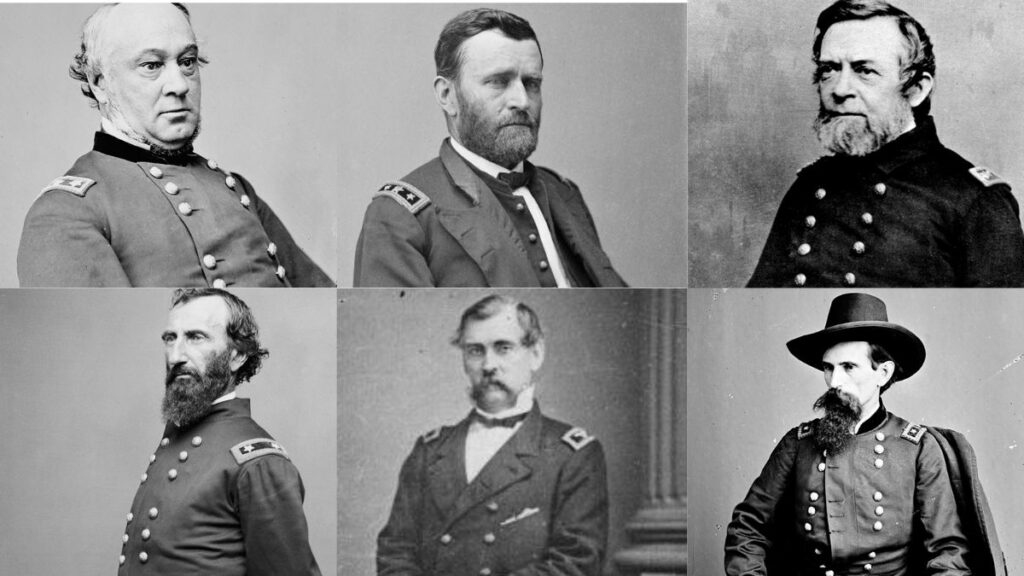
The Union forces at Fort Donelson were commanded by Brigadier General Ulysses S. Grant, whose decisive actions were crucial for the victory.
Grant’s clear orders and effective coordination were instrumental in overcoming Confederate defenses.
Brigadier General John McClernand led one of the divisions, focusing on attacking the Confederate right flank.
Brigadier General Charles F. Smith commanded the Union left, successfully capturing key positions.
Brigadier General Lew Wallace led reinforcements that played a significant role in the Union encirclement of the fort.
Grant’s leadership and his team’s coordination laid the groundwork for the Union’s strategic success.
Explore More: Army Forts in Tennessee
The outcome of the Battle
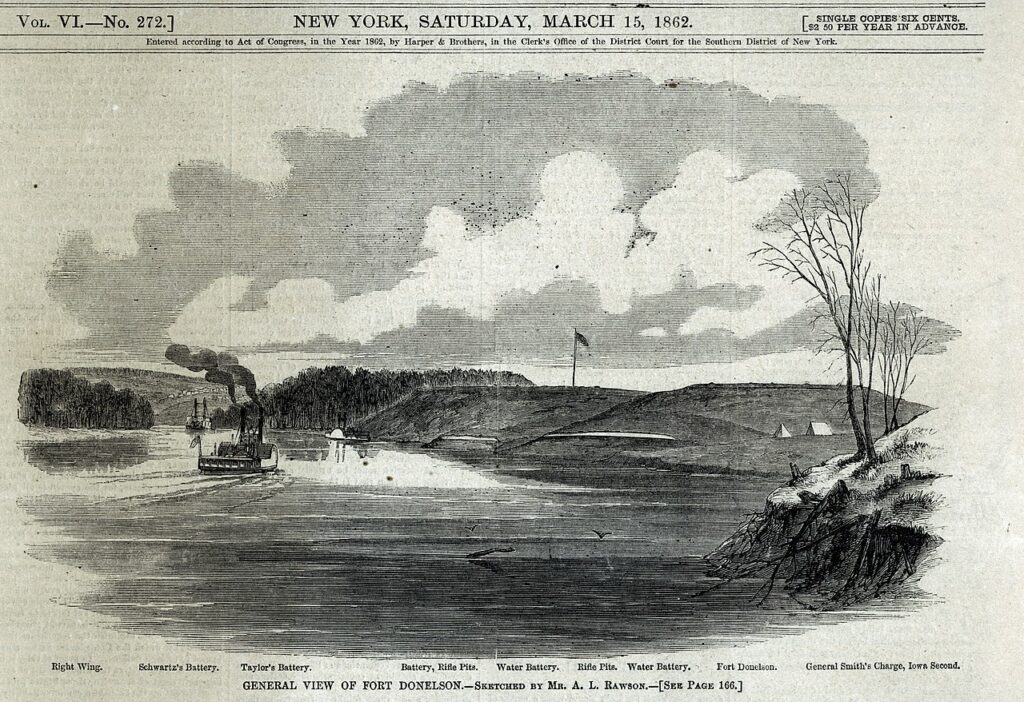
Following the intense and pivotal Battle of Fort Donelson, key developments noted were the mass surrender and its subsequent impact on the Civil War, marking a decisive Union victory.
Surrender and Aftermath
On February 16, 1862, Confederate forces at Fort Donelson surrendered to Union forces led by Ulysses S. Grant.
This marked a significant victory for the Union and earned Grant the nickname “Unconditional Surrender” Grant due to his demands for an immediate and total surrender without terms.
The fall of Fort Donelson led to the capture of approximately 12,000 Confederate troops.
This substantial loss of personnel dealt a severe blow to the Confederate war effort and morale.
The town of Dover, Tennessee, situated near the fort, was left in Union control, further solidifying the strategic gains from this victory.
Impact on the Civil War’s Progression
The capture of Fort Donelson had substantial implications for the Civil War’s progression.
It helped the Union gain control of key waterways, including the Cumberland River, which was vital for the transport and logistics of Union forces.
This strategic advantage gave the Union a critical foothold in the Southern states.
Union victory at Fort Donelson also bolstered Northern morale and support for the war effort while weakening Confederate resolve.
It demonstrated Ulysses S. Grant’s effective leadership, boosting his reputation and leading to greater responsibilities and successes in future battles.
These developments shifted the momentum of the Civil War in favor of the Union, leading to further campaigns into the Confederacy and tightening the Union’s grip on strategic points across the South.
Preservation and Memorialization
Preservation and memorialization of Fort Donelson in Tennessee include the establishment of a National Cemetery and historical recognition through various organizations.
National Cemetery and Historical Recognition
Fort Donelson National Cemetery, created after the Civil War, holds the graves of Union soldiers who fought at the Battle of Fort Donelson.
Managed by the National Park Service, this cemetery in Dover, Tennessee, is a solemn place for visitors to pay respects.
The Fort Donelson National Battlefield is listed on the National Register of Historic Places, ensuring protection and recognition of its historical significance.
Collaborative efforts with the American Battlefield Trust aim to preserve the battlefield’s integrity and educate the public about its importance.
Explore More: 21 Historic Forts of Tennessee
Broader Significance and Military Tactics
Fort Donelson demonstrated critical advancements in military technology and tactics that extensively affected Civil War battles. It also set precedents influencing key conflicts such as Vicksburg and Shiloh.
Technological and Tactical Developments
The siege of Fort Donelson marked Union forces’ effective use of combined land and naval operations.
Ironclad gunboats, led by Flag Officer Andrew H. Foote, played a crucial role.
Their cannon fire pounded Confederate defenses, creating opportunities for ground assaults.
Both sides strategically utilized rifle pits and trenches, showcasing evolving battlefield tactics.
These features provided significant defensive advantages, with entrenched soldiers resisting direct assault more effectively.
The Union’s ability to cut Confederate supply lines proved decisive, isolating and weakening the garrison.
Influence on Subsequent Civil War Battles
The victory at Fort Donelson bolstered Union morale and strategic positioning, paving the way for further successes.
It directly influenced the Battle of Shiloh, where Union forces, encouraged by prior triumphs, demonstrated greater resilience and coordination.
Vicksburg’s eventual fall can also be traced back to the tactical lessons learned. Emphasis on control of supply lines and coordinated maneuvers between different military branches became essential strategies.
The capture of Fort Donelson exemplified the effectiveness of siege warfare combined with technological advancements, guiding Union strategies throughout the war.

Cory is a website owner and content creator who enjoys fishing, history, coin collecting, and sports, among other hobbies. He is a husband and father of four.
Romans 15:4 For whatever was written in former days was written for our instruction, that through endurance and through the encouragement of the Scriptures we might have hope.

